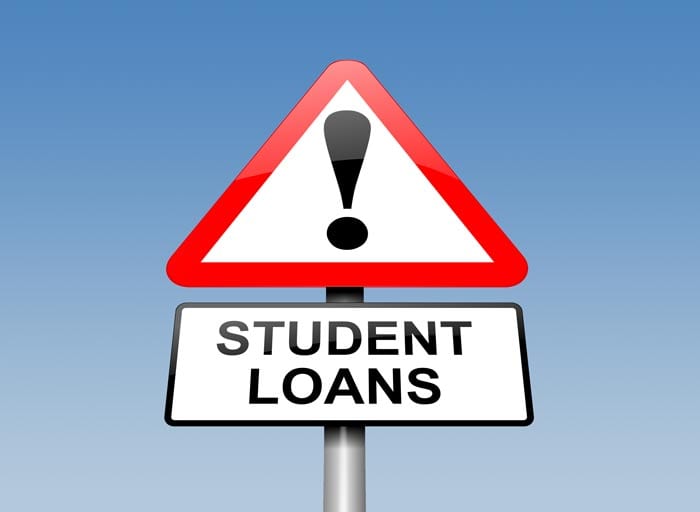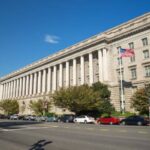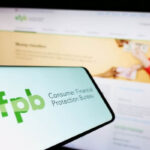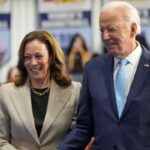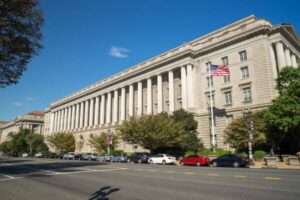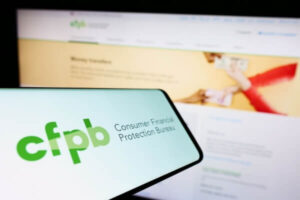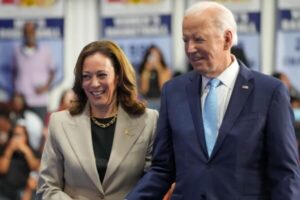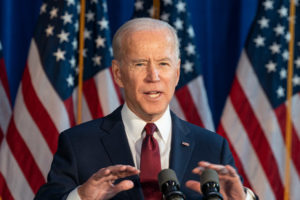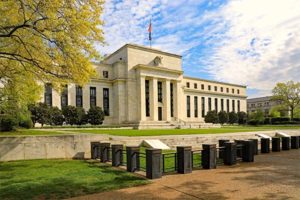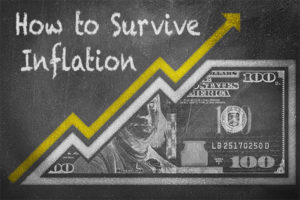Confusion Clouds Future of Student Loan Forgiveness Programs
Here’s a warning for anyone who must borrow money for college. There’s an assault under way on the most cost-effective and popular student-loan repayment programs.
Lines are being drawn and people are choosing sides. The ability for borrowers to efficiently erase the $1.5-trillion in student-loan debt suddenly looks far less promising.
Potential solutions are being proposed all around, but no one seems to have the definitive answer for a problem that is handcuffing generations of students, especially Millennials.
According to the Brookings Institute, students have become increasingly reliant on loans. In 2000, about 38% of an average student’s tuition was covered by a loan. That figure is now more than 50%.
The average graduate has $37,000 in student-loan debt — about $23,000 more than a decade ago. The overall figure of $1.5-trillion in student-loan debt is nearly triple from a decade ago.
“We have to find a way to break this destructive trend,’’ personal-finance expert Ric Edelman said. “We are destroying an entire generation of Americans by saddling them with oppressive debts that far exceed economic justification for the degree they are seeking.
“It’s a mess,’’ he added.
The Trump Administration’s latest response was submitting a 2019 budget that would eliminate the Public Service Loan Forgiveness (PSLF) plan for new borrowers, which would save the government $24-billion over the next decade, while consolidating the income-driven repayment options. Proposals are just proposals though, and don’t mean anything without legislative approval.
Is $350 Million Enough to Save PSLF?
Then came an unexpected olive branch related to the PSLF. After some compromise, a $350-million student-loan forgiveness fund was slipped into the Omnibus Spending Bill passed in March of 2018.
So far, it has prompted as many questions as answers and that won’t change until the Department of Education specifies how the money will be administered.
There are much greater concerns over student-loan actions already taken by Congress and the DOE.
The Prosper Act — H.R. 4508 or the “Promoting Real Opportunity, Success, and Prosperity through Education Reform Act” — has made it through committee to the House of Representatives.
Its sponsor, U.S. Rep. Virginia Foxx (R-N.C.), said the 590-page bill will streamline federal college loan programs and limit exposure to debt, while providing financial incentives for students to complete bachelor’s degree requirements in four years.
Prosper Act critics point out increased costs — 50% more per month for new borrowers, no loan forgiveness and a smaller pool of available money for graduate school — could crush access to higher education. Like Trump’s budget proposal, the Prosper Act also would end the PSLF program.
“That is precisely the opposite of what our country needs right now,’’ Georgetown University law professor John R. Brooks wrote in an essay for The New York Times that urged an investment in higher education, not a cutback. “We should be embracing and expanding income-driven repayment plans, not backing away.”
Foxx said it’s precisely what the country does need right now. She pointed to the record $1.5-trillion in student-loan debt, which continues to rise each year.
“We cannot allow the status quo to continue,’’ Foxx said while introducing the bill. “Somehow, despite the six types of federal student loans, nine repayment plans, eight forgiveness programs, and 32 deferment and forbearance options out there, college costs continue to surge, leaving millions of families paying the price for well-intentioned but poorly executed federal involvement.’’
The Prosper Act also includes language that would negate state oversight of the student loan service industry. For that reason, a bipartisan coalition of 30 state Attorney Generals wrote a letter to Congress, urging legislators to reject the proposal that would end the states’ ability to investigate student-loan abuse and pursue reform.
Student-loan servicing companies, of course, have lobbied DOE Secretary Betsy DeVos against additional oversight by the states. The DOE issued a statement in March that claimed only the federal government has authority to oversee the student-loan contractors, who are paid nearly $1-billion by the DOE to handle debt payments. Instead of a neutral stance or a consumer advocate role, it put the DOE clearly in the camp of the servicers, not the borrowers.
“State regulation of the servicing of direct loans impedes uniquely federal interests,’’ the DOE wrote.
Increased state regulation has been interpreted as an indictment on the DOE’s ability to monitor the companies. The DOE’s statement was promptly slammed by legal experts, who claimed it was a toothless gesture.
“Nowhere in this document does the Department of Education quote a statute from Congress that says the department is authorized to block states from stopping deceptive debt collection practices (and) that’s because such a law does not exist,’’ Christopher Peterson, a University of Utah law professor and former enforcement attorney at the Consumer Financial Protection Bureau, told The Washington Post.
California, Connecticut and the District of Columbia require student-loan companies to obtain a license, giving those states and the district an ability to monitor compliance with federal laws. Other states may follow suit.
“The entire student-loan industry has been in a bad place for some time now,’’ George Washington University professor Annamaria Lusardi said. “It’s getting worse.’’
Future of Student Loan Debt
Where the student loan situation currently is – and where both the current administration and members of Congress want it to go – is a fluid situation. The answers aren’t obvious or predictable, leaving many questions to be answered.
Here are a few:
What’s the Future of Public Service Loan Forgiveness?
Current PSLF participants are grandfathered into the program so no changes will affect them. However, it doesn’t look promising for new borrowers. Trump’s first two proposed budgets called for the elimination of the PSLF plan. It’s also targeted for elimination by the Prosper Act.
The PSLF program, which offers loan forgiveness after 10 years of on-time payments for people in approved government and charity work, already saw controversy this year. CNN Money reported that of about 7,500 applicants in the first year of PSLF eligibility, less than 1,000 borrowers had their loans forgiven.
The disparity was blamed on misinformation from loan companies, who failed to inform students that only Direct Federal Loan participants were eligible. If you are currently in the program, check with your service providers and make sure you’re on the right path to having the balance on your loans eventually forgiven.
What about the $350 Million for PSLF?
We should know sometime in 2018 how the DOE plans to utilize the money. It’s meant for borrowers who thought they would qualify for the PSLF, only to discover they had signed up for the wrong type of loan.
The fund will be offered on a first-come, first-serve basis until it runs out. Then it’s gone.
What’s the Future of Income-Driven Repayment Programs?
The concept of IDR is to keep student-loan payments at 10% of discretionary income, which doesn’t include mortgage/rent, utility and food expenses. The debt is forgiven after 20 to 25 years. Instead of crippling debt, the 6.5-million borrowers (at a total debt of $352-billion) have a manageable burden.
Trump has proposed consolidating all the income-driven options into one income-based plan. He favors monthly payments that cap at 12.5% of the borrower’s discretionary income and loan forgiveness at 15 years.
Some legislators, though, claim the IDR benefits are far too generous. Sen. Lamar Alexander (R-Tenn.) said most students now expect their debt to be forgiven. A study from the Urban Institute said the current IDR system will likely impose high costs on taxpayers.
According to the Congressional Budget Office (CBO), the Prosper Act’s changes could bring another $40-billion in loan repayments to the government over the next 10 years.
As Brooks, the Georgetown law professor, wrote in his Times essay: “ Taxpayers have always subsidized higher education, recognizing that it produces enormous gains for the economy and for society as a whole. … The Department of Education is a lender, but it is not a bank; its purpose — and the purpose of the student loan program — is to further education and support students, not to turn a profit.’’
Brief History of Student Loans
Where did the student-loan industry begin? And how did it evolve into a $1.5-trillion nightmare?
The modern student-loan system dates to the 1940s and 1950s. In 1944, the G.I. Bill began, allowing World War II veterans to attend college for lower tuition rates (or free). Very soon, veterans accounted for half of the students enrolled in college.
In 1958, federal student loans began under the National Defense Education Act. They were meant to keep Americans competitive with other countries, particularly the Soviet Union, in mathematics, science and engineering.
The 1965 Higher Education Act was a watershed moment. It prompted Educational Opportunity Grants to colleges for students with considerable financial need. The Guaranteed Student Loan Program (also known as the Federal Family Education Loan Program — FFELP) allowed banks and private companies to provide government subsidized and guaranteed loans to students. In 1972, the Pell Grant (or Basic Educational Opportunity Grant) was created.
In 1993, the government took an increased role under the Student Loan Reform Act, which implemented the Direct Lending program and allowed the government to directly lend to borrowers (instead of students exclusively going through a private company).
When the Great Recession hit in 2008, many private lenders backed out of the government subsidized plans because they couldn’t provide loans to students.
In 2010, the Obama Administration eliminated the FFELP and required all federal loans to be Direct Loans. The trend continued toward government loans over private loans as the program was effectively nationalized (the Department of Education handles about 90% of all student loans).
Instead of large government subsidies to private lenders — the old system — the Obama Administration and Congress shifted those funds to income-driven repayment and Pell Grants. That allowed all borrowers (even those with older loans) to limit their payments to 10% of discretionary income. After 20 to 25 years, the unpaid balances were forgiven. Under the PSLF plan, the unpaid balances were forgiven in 10 years (or 120 consecutive payments) for students in selected government or public service careers.
With the rise of student-loan bureaucracy, the CFPB has heard of consumers being driven into default because of sloppy collection and application of payments.
With more complaints, states began to get involved, sensing the need for additional oversight and regulation. Student-loan companies said states should support simplifying repayment plans and counseling students before they borrow. But with the Trump Administration looking to roll back consumer protections for student-loan borrowers, states have become even more interested in providing regulation.
Epilogue
The student-loan concept, the way it is administered, the qualifications, the different plans … it’s all up for review.
If you’re a student — or a future student — how the government changes the way it handles student loans, is a subject that should be on your radar.
It’s a politically charged issue, one that touches on government, college campuses, the White House, the Congress and nearly every family in America.
And this issue isn’t going away.
You have been warned.
Sources:
- Kreighbaum, A., (2018, 22 March), New Boost For Student Aid And Research. Retrieved from: https://www.insidehighered.com/news/2018/03/22/omnibus-spending-package-boosts-student-aid-while-restricting-devos-priorities
- Brooks, J. (2018, April 9) Don’t Let the G.O.P. Dismantle Obama’s Student Loan Reforms. Retrieved from https://www.nytimes.com/2018/04/09/opinion/student-loan-reform-prosper-act.html
- Stratford, M., (2018, 23 March), Compromise Fix For Public Service Loan Forgiveness. Retrieved from: https://www.politico.com/newsletters/morning-education/2018/03/23/compromise-fix-for-public-service-loan-forgiveness-149361
- Douglas-Gabriel, D., (2018, 7 March), CBO Estimates Show House Higher Ed Bill Could Hit Student Loan Borrowers Hard. Retrieved from: https://www.washingtonpost.com/news/grade-point/wp/2018/02/07/cbo-estimates-show-house-higher-ed-bill-could-hit-student-loan-borrowers-hard/?noredirect=on&utm_term=.1eef3b2e33c6
- Travis, K., (2018, 2 February), U.S. Rep. Foxx Talks Prosper Act, Modern Challenges For Higher Education. Retrieved from: https://www.carolinajournal.com/news-article/rep-virginia-foxx-talks-prosper-act-modern-challenges-for-higher-education/
- NA, (2018, 9 April), Trump Student Loan Forgiveness. Retrieved from: https://www.studentdebtrelief.us/forgiveness/trump-student-loan-forgiveness/
- Douglas-Gabriel, D., (2018, 9 March), Education Department Opens Door For Student Loan Companies To Ignore State Authority. Retrieved from: https://www.washingtonpost.com/news/grade-point/wp/2018/03/09/education-dept-tells-student-loan-companies-to-ignore-state-authority/?utm_term=.896105a2a35e

